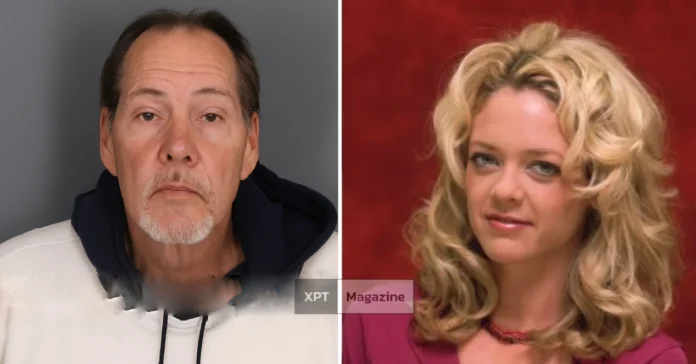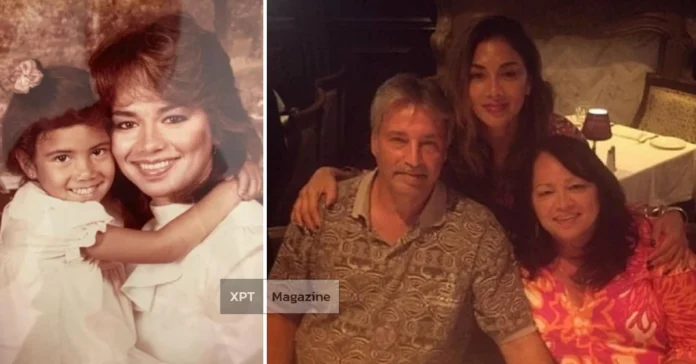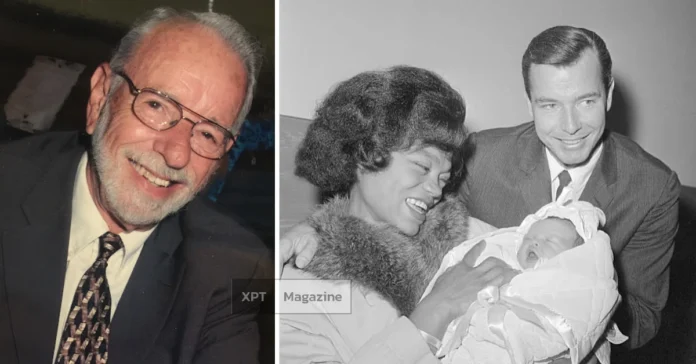Robert Joseph Gilliam married actress Lisa Robin Kelly in October 2012. Their relationship involved domestic disputes and arrests before Kelly’s death in August 2013. Gilliam later filed a wrongful-death lawsuit against her rehab facility. Limited verified information exists about his life before or after this period.
Robert Joseph Gilliam became a public figure in 2012 when he married actress Lisa Robin Kelly, best known for playing Laurie Forman on That ’70s Show. Most people had never heard his name before that October wedding. Within months, his relationship with Kelly thrust him into headlines involving legal troubles, domestic disputes, and eventually, a wrongful-death lawsuit following her passing in August 2013.
Gilliam’s story reveals how quickly a private life can become public property when tied to celebrity. The record shows a brief, troubled marriage followed by years of tabloid coverage. But beyond the headlines, verified facts about Gilliam remain thin. This biography separates what’s documented from what’s been recycled across gossip sites.
Early Life and Background (What We Can Verify)
Public records offer little concrete information about Gilliam’s early years. Some sources describe him as a former drug counselor, while others simply label him a private citizen. Neither claim comes with solid documentation.
What’s clear is that Gilliam lived in North Carolina when he met Kelly. His age puts him roughly in his late 40s or early 50s today, based on limited biographical fragments. Court filings and news reports from 2012 onward provide most of what’s known about him. Before that marriage certificate, his footprint was minimal.
The lack of a verified background shouldn’t surprise anyone. Many people who enter the spotlight through relationships remain largely unknown outside that connection. Gilliam’s profession, education, and family history remain murky because no reliable interviews or profiles exist. What follows centers on the documented timeline rather than speculation.
How They Met: A Short Relationship Snapshot
Kelly and Gilliam’s relationship became public knowledge when they married in October 2012. The actress had recently completed a rehab stint and was working to rebuild her life after struggles with alcohol addiction. Friends hoped the marriage signaled a fresh start.
Details about their courtship remain private. Neither gave interviews explaining how they met or how long they dated before marrying. What’s documented is the marriage itself and the rapid deterioration that followed. Within weeks, police reports would tell a different story than the hopeful wedding photos suggested.
Marriage, Public Incidents, and Legal Trouble
One month after the wedding, November 2012 brought the first arrest. Police in North Carolina responded to a domestic disturbance call. Both Kelly and Gilliam faced charges. Public reports indicate mutual accusations of assault, though specific details vary across sources. Court records from that incident exist but aren’t widely published online.
The pattern continued into 2013. Kelly filed for a restraining order against Gilliam, citing fear for her safety. She also initiated divorce proceedings. Meanwhile, Gilliam filed his own protective order against Kelly. The back-and-forth legal actions painted a picture of a relationship marked by conflict rather than the stability both may have hoped for.
News coverage from that period focused heavily on Kelly’s past struggles with addiction and previous arrests. Gilliam received less scrutiny, though his involvement in the domestic incidents kept his name in circulation. Neither party spoke publicly about the marriage or the charges during this time.
The Aftermath: Lisa Robin Kelly’s Death and Legal Follow-Up
Lisa Robin Kelly died on August 15, 2013, at a rehab facility in California. She was 43. The coroner’s report listed multiple drug intoxication as the cause. Her passing devastated fans who remembered her work on That ’70s Show and hoped she would overcome her personal battles.
Gilliam filed a wrongful-death lawsuit in 2014, claiming the facility failed to provide adequate care. The suit alleged negligence in monitoring Kelly’s condition and administering medications. Legal documents named both the rehab center and its staff. The case attracted media attention because it raised questions about treatment protocols and the duty of care in addiction facilities.
The outcome of that lawsuit isn’t widely reported. Court records would show whether the case was settled, dismissed, or went to trial, but those documents aren’t easily accessible through public databases. Many wrongful-death claims settle out of court with confidentiality agreements, which could explain the lack of follow-up coverage.
Timeline — Quick Facts
October 2012: Robert Joseph Gilliam and Lisa Robin Kelly marry in North Carolina.
November 2012: Both face arrest following domestic disturbance allegations.
Mid-2013: Kelly files for divorce and a restraining order; Gilliam files a protective order against Kelly.
August 15, 2013: Kelly dies at a California rehab facility from multiple drug intoxication.
2014: Gilliam files wrongful-death lawsuit against the treatment center.
What Was Robert’s Public Profile After 2013?
Gilliam largely disappeared from public view following the legal action. Tabloid sites occasionally mention his name in retrospectives about Kelly’s life, but substantive updates don’t exist. No social media presence has been confirmed. No interviews or public statements have surfaced.
This absence makes sense for someone who entered the spotlight involuntarily. The marriage brought unwanted attention, and the death of a spouse compounds that burden. Whether Gilliam returned to private life in North Carolina or relocated elsewhere remains unknown.
Some entertainment blogs speculate about his current activities, but these pieces recycle the same thin information. The speculation adds no value. What matters is recognizing that after 2014, verified information stops. Anything beyond court filings and news reports from that period enters the realm of guesswork.
How to Read the Record: What’s Verified vs. What’s Repeated
Most articles about Gilliam repeat the same few facts: the marriage date, the arrests, Kelly’s death, and the lawsuit. That repetition creates an illusion of comprehensive knowledge. In reality, the public record contains maybe a dozen verifiable data points spread across two years.
Court documents, police reports, and obituaries provide the strongest evidence. News coverage from established outlets comes next. Celebrity gossip sites and fan blogs rank lowest on the reliability scale. Many simply copy from each other, amplifying errors and filling gaps with assumptions.
Readers should question claims without citations. “Sources say” and “reportedly” signal uncertain information. Direct quotes from legal documents or official statements carry more weight. The difference matters when separating a person’s actual story from the narrative others construct around them.
Final Note: What We Still Don’t Know (and Where a Writer Could Look)
Gilliam’s biography contains more blanks than completed paragraphs. His early life, current whereabouts, and even basic details like full employment history remain mysteries. The wrongful-death lawsuit’s resolution could clarify his perspective on Kelly’s death, but those records require deeper digging than most writers attempt.
Anyone wanting more complete information should start with North Carolina court records for the domestic incidents and divorce filings. California courts would hold documents related to the wrongful-death case. Local news archives from both states might contain coverage missed by national outlets.
The bigger question is whether filling those gaps serves any purpose beyond curiosity. Gilliam’s connection to a beloved actress made him temporarily newsworthy, but he didn’t choose that spotlight. Respecting privacy while acknowledging public interest creates a tension every biographer faces. The line between legitimate reporting and invasive speculation shifts depending on who’s drawing it.
What’s certain is that Robert Joseph Gilliam’s public story intersects with tragedy, legal conflict, and loss. The full picture may never emerge. What we have is a fragment—a brief marriage, painful incidents, and years of silence that followed. That incomplete record deserves both accuracy in retelling and humility about what remains unknown.




